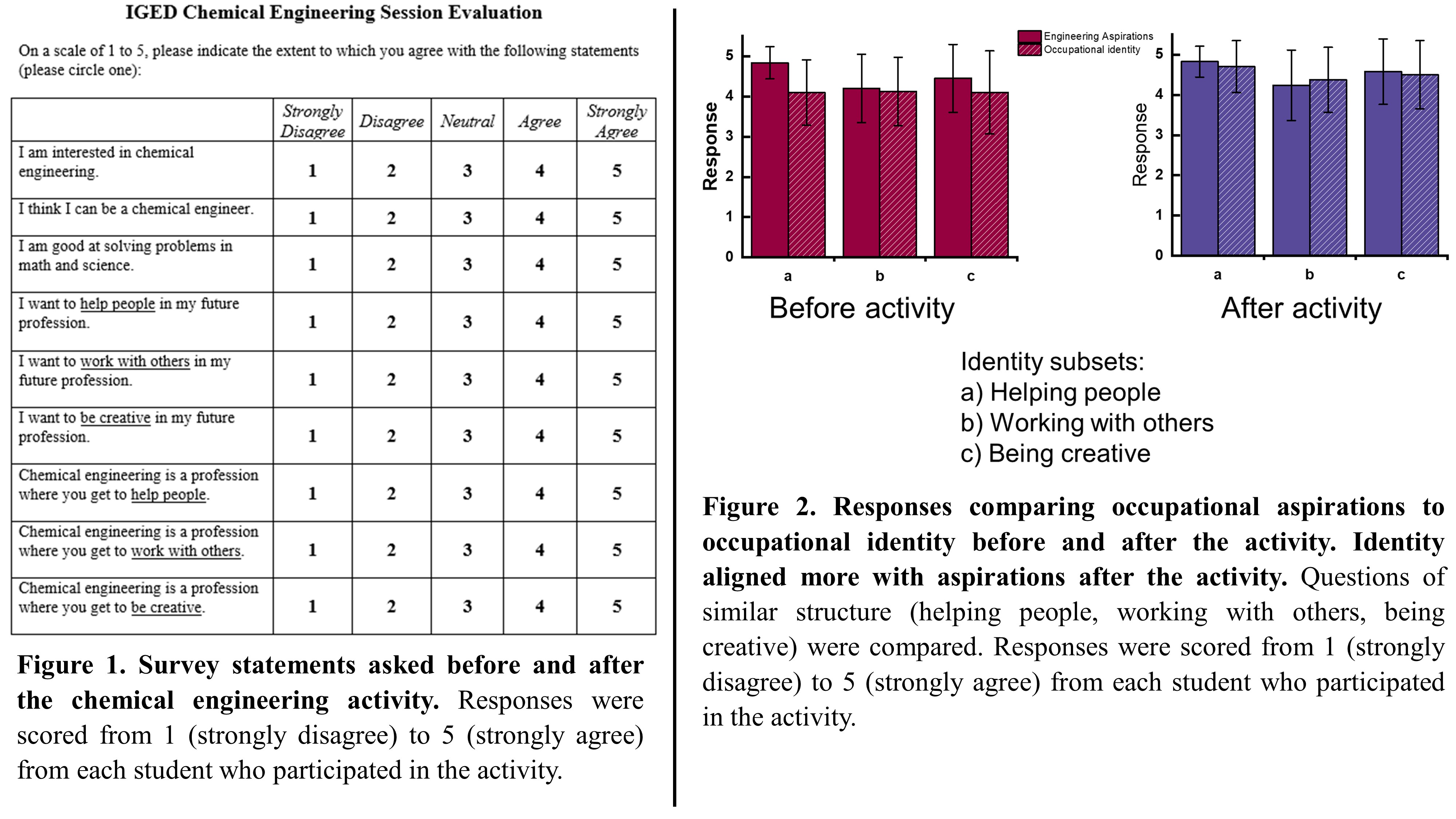(188g) Enhancing Chemical Engineering Identity in Young Women with a Biomedical Polymer Outreach Activity
AIChE Annual Meeting
2022
2022 Annual Meeting
Education Division
Societal Issues in the ChE Classroom and Curriculum
Monday, November 14, 2022 - 4:38pm to 4:54pm
The outreach activity was a session for Purdue Women in Engineering Program’s Introduce a Girl to Engineering Day, a free day-long event for high schoolers in 9th and 10th grades. The session was composed of a short presentation introducing chemical engineering and polymers. In the activity, students explored the potential for the super absorbing polymer, sodium polyacrylate to function as a hydrating wound patch for burn victims. The activity was broken into three challenges. The first challenge showed students two extreme polymer to water ratios; the second challenge encouraged students to optimize their own ratio for hydration and stiffness; and the final challenge was to translate the material for industrial use. A survey was given to students before and after the chemical engineering activity. Students were asked to access their agreement with statements about their opinions of their technical abilities (academic identity), career interests (occupational aspirations), and thoughts of the chemical engineering field (occupational identity). Figure 1 lists the questions asked in both the pre-survey and the post-survey. The two biggest increases in agreement from the survey were in the statements “I am interested in chemical engineering,†and “Chemical engineers help people.†Agreement with all statements increased except the statement “I want to help people in my future profession,†which remained unchanged.
The differences in occupational aspirations and occupational identity were also measured as a result of the activity (Figure 2). This comparison was intended to determine if there was a mismatch between what students want to do in their future professions and if they think chemical engineers do those things. When asked before the activity if they wanted to help people, work with others, and be creative, most students strongly agreed, but fewer students thought they could do these things as chemical engineers. After the activity, the mismatch decreased or flipped.
Overall, this biomedical polymer activity can increase young women’s understanding of chemical engineering and align their career values with the chemical engineering field. This activity introduces chemical engineering from a broader lens and emphasizes creativity, teamwork, and helping others as components to the chemical engineering discipline.

